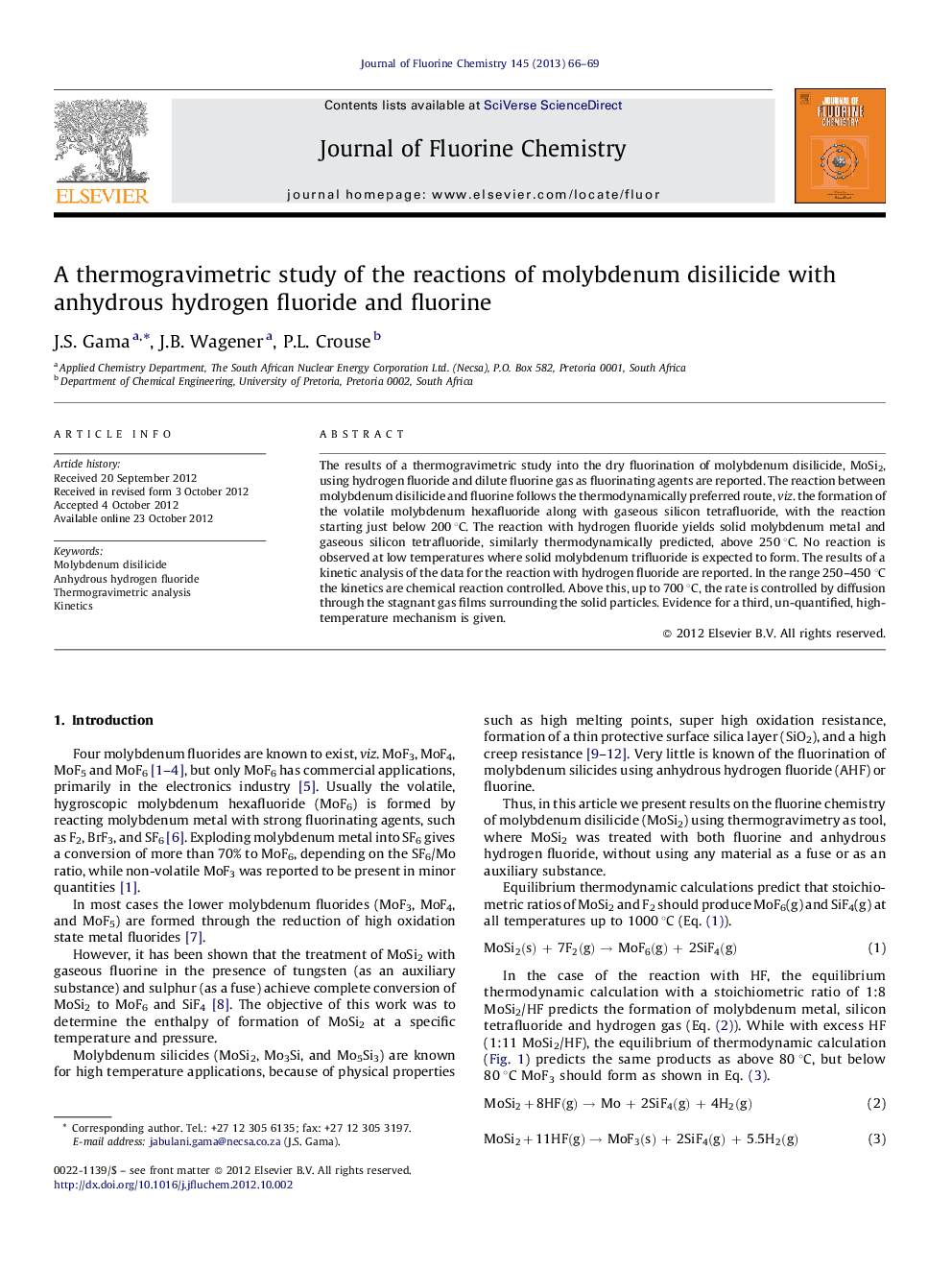| Article ID | Journal | Published Year | Pages | File Type |
|---|---|---|---|---|
| 1314484 | Journal of Fluorine Chemistry | 2013 | 4 Pages |
The results of a thermogravimetric study into the dry fluorination of molybdenum disilicide, MoSi2, using hydrogen fluoride and dilute fluorine gas as fluorinating agents are reported. The reaction between molybdenum disilicide and fluorine follows the thermodynamically preferred route, viz. the formation of the volatile molybdenum hexafluoride along with gaseous silicon tetrafluoride, with the reaction starting just below 200 °C. The reaction with hydrogen fluoride yields solid molybdenum metal and gaseous silicon tetrafluoride, similarly thermodynamically predicted, above 250 °C. No reaction is observed at low temperatures where solid molybdenum trifluoride is expected to form. The results of a kinetic analysis of the data for the reaction with hydrogen fluoride are reported. In the range 250–450 °C the kinetics are chemical reaction controlled. Above this, up to 700 °C, the rate is controlled by diffusion through the stagnant gas films surrounding the solid particles. Evidence for a third, un-quantified, high-temperature mechanism is given.
Graphical abstractA simulation of the reaction between MoSi2 and HF predicts Mo, SiF4(g) and H2(g) as the products.Figure optionsDownload full-size imageDownload as PowerPoint slideHighlights► Fluorine gas completely converts the molybdenum disilicide (MoSi2) to volatile fluorides, MoF6 and SiF4. ► While the MoSi2 with anhydrous hydrogen fluoride (AHF) yielded solid molybdenum metal and gaseous silicon tetrafluoride. ► The kinetics are controlled by diffusion through the stagnant gas films surrounding the solid particles and chemical reaction controlled.
